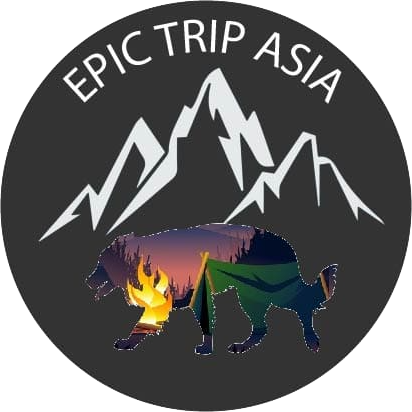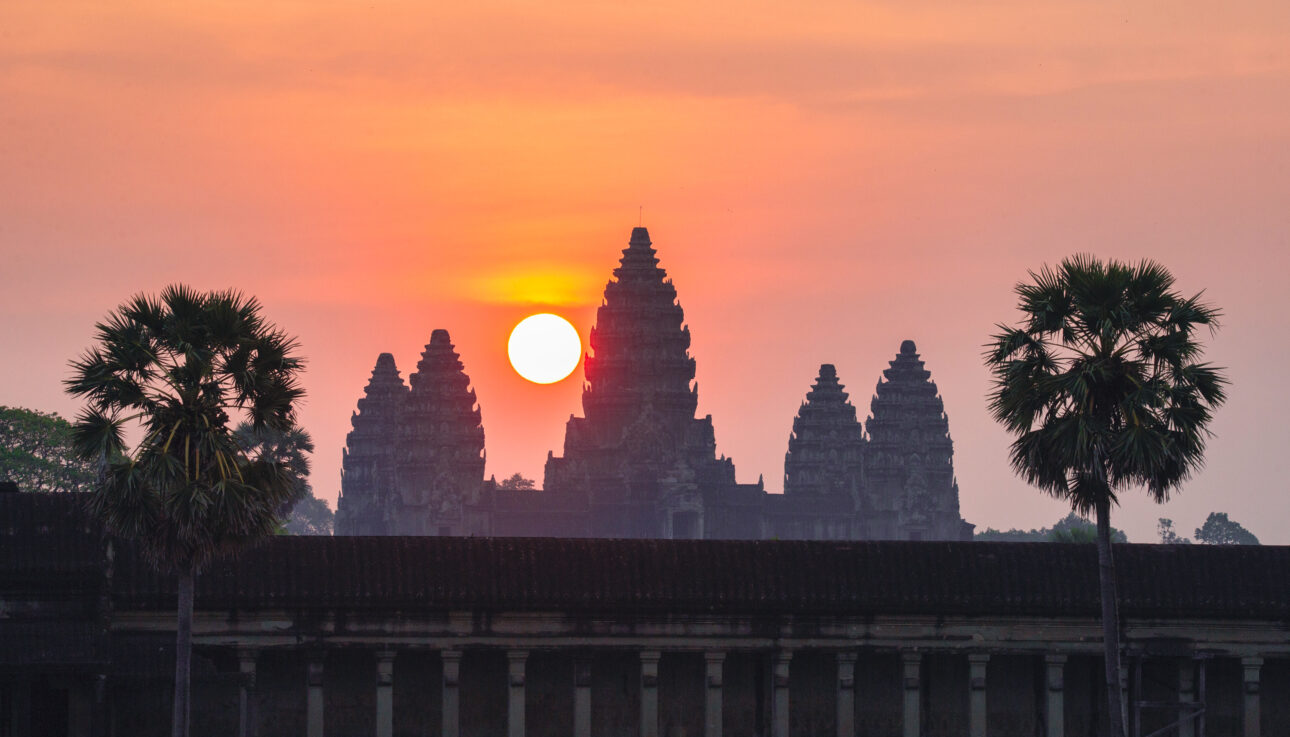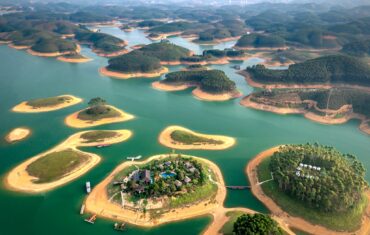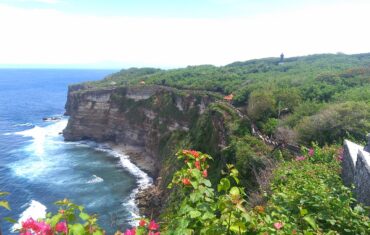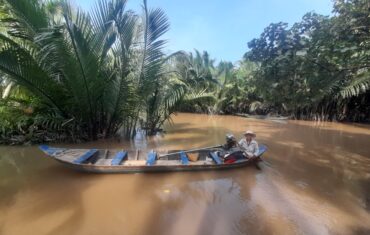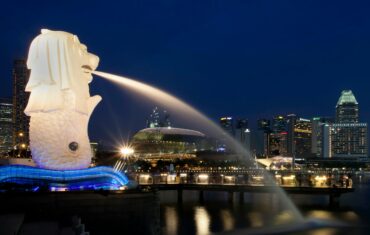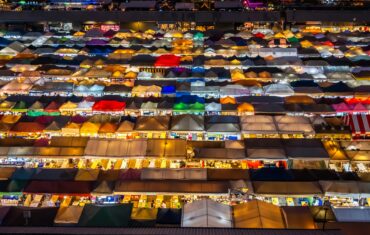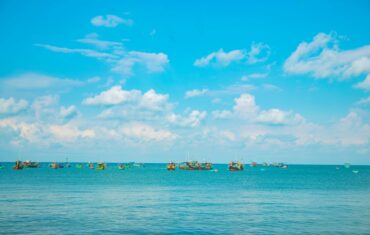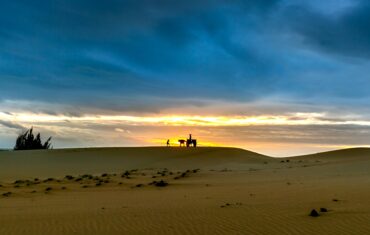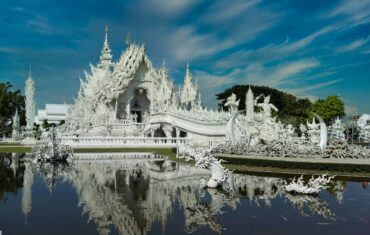The Kingdom of Cambodia is known as “the Land of Pagodas”, a captivating destination where pristine natural beauty blends seamlessly with the majestic architectural complexes of the Angkor temples, one of Southeast Asia’s most extraordinary archaeological treasures. These remarkable monuments, left behind by the ancient Khmer Empire, hold countless mysteries and represent one of the greatest civilizations in human history.
Cambodia, also known as the “Kingdom of Magic”, is a country that has successfully risen from a turbulent past marked by war and hardship. In just a few decades, it has overcome the scars of conflict and emerged as a promising and attractive travel destination. Today, its iconic landmarks, rich cultural heritage, and strong spiritual traditions stand as a powerful testament to the resilience of the Cambodian people, drawing travelers from around the world seeking culture, history, and authentic experiences.
GEOGRAPHY
Located in the southwestern part of the Indochinese Peninsula, Cambodia borders Thailand to the north and west, Vietnam to the east and southeast, Laos to the northeast, and the Gulf of Thailand to the south.
Phnom Penh, the capital city, serves as the country’s political, economic, and cultural hub.
Covering an area of approximately 181,035 square kilometers, Cambodia is characterized by vast fertile plains, which make up nearly half of the country, mainly in the southern and southeastern regions. The remaining areas are dominated by hills and mountain ranges.
Cambodia is also defined by its extensive river system, most notably the Mekong River, which flows from north to south and plays a vital role in agriculture, transportation, and daily life.
Upon arrival, visitors are welcomed by the peaceful atmosphere and rustic charm of a land rich in tradition, simplicity, and natural beauty.
CULTURE
Cambodia’s culture is deeply rich and spiritual. Approximately 90% of the population is Khmer, and Buddhism is the national religion, playing a central role in daily life and social values. In addition to Buddhism, other religions such as Christianity and Islam are also practiced.
Cambodians are known for their simple, respectful, and polite way of life. The traditional greeting, called sampeah, involves pressing the palms together at chest level with a slight bow of the head as a sign of respect.
Cambodian culture is especially captivating for visitors. The Cambodian people are widely admired for their warm hospitality and pride in their cultural heritage. One of the most iconic cultural expressions is the Apsara classical dance, an elegant traditional ballet that tells ancient mythological stories through graceful and refined movements.
Throughout the year, Cambodia hosts many traditional festivals. One of the most important is the Bon Om Touk Water Festival, during which colorful boat races animate the waters of the Tonle Sap River, creating a vibrant and festive atmosphere.
Cambodia is also renowned for its ancient temples, with three UNESCO World Heritage Sites: Angkor, Preah Vihear, and Sambor Prei Kuk. Visitors to this remarkable land are often amazed by the grandeur and splendor of these ancient structures, where time is etched into every stone and centuries-old trees rise dramatically from temple rooftops, creating truly unforgettable landscapes.
CURRENCY
The official currency of Cambodia is the Cambodian Riel (KHR); however, the US Dollar (USD) is widely used throughout the country.
In general, the riel is mainly used for small transactions, such as purchases under USD 5, local transportation (tuk-tuks, motorbike taxis), or expenses in rural areas.
Coins are available in denominations of 50, 100, 200, and 500 riels, while banknotes come in values of 50, 100, 200, 500, 1,000, 2,000, 5,000, 10,000, 20,000, 50,000, and up to 100,000 riels.
At present, coins are rarely used, and higher-denomination riel banknotes are relatively uncommon.
The US Dollar is widely accepted and commonly used for payments in hotels, restaurants, tourist shops, and taxis, especially in major cities such as Phnom Penh and Siem Reap.
Travel tip: it is advisable to carry small USD bills and some riel for daily expenses and local payments.
SAFETY
Cambodia is a beautiful country and is considered relatively safe for international travelers. In major cities and popular tourist areas, security forces place a strong emphasis on protecting visitors and ensuring their safety.
However, as with any destination worldwide, basic precautions are always advisable. Travelers are encouraged to avoid walking alone in deserted areas at night. In such situations, using a taxi or licensed transportation service is recommended, and taking note of the vehicle’s license plate before boarding can add an extra layer of security.
Visitors should also take good care of personal belongings, including cash, bank cards, passports, and mobile phones. When using local transportation such as tuk-tuks or motorbike taxis, it is best to negotiate and agree on the fare in advance.
For a safe and enjoyable trip, travelers are advised not to explore remote forests, isolated rural areas, or border regions without a professional guide, and to avoid crossing borders outside official checkpoints. By following these simple guidelines, visitors can enjoy a safe, smooth, and enriching journey through Cambodia.
HEALTHCARE
The healthcare infrastructure in Cambodia does not yet meet European standards, and medical services at private hospitals can be relatively expensive. However, in recent years, Cambodia’s healthcare system has made significant improvements, particularly in major cities, thanks to better facilities and a growing number of well-trained medical professionals.
Travelers should be aware of several common diseases in Cambodia, including avian influenza, hepatitis, malaria, dengue fever, and intestinal parasitic infections. Therefore, it is strongly recommended to consult a healthcare professional or travel clinic before traveling to Cambodia to receive up-to-date medical advice and necessary vaccinations.
Having comprehensive travel medical insurance is highly recommended to ensure a safe and worry-free journey.
TRANSPORTATION
Currently, Cambodia’s transportation system is gradually improving, with ongoing investments in road infrastructure aligned with international standards. The country is implementing more than 21 major transportation projects aimed at connecting heritage sites, key cities, and popular tourist destinations.
The main modes of transport in Cambodia include air, water, and land transportation (roads and railways). Travelers can enter and exit the country easily by air, while domestic travel is most commonly done by bus, minivan, or tuk-tuk, especially for intercity journeys.
Compared to other countries in Southeast Asia, traffic density in Cambodia remains relatively low. In rural areas, it is still common to see ox carts or horse-drawn carriages, reflecting the country’s traditional way of life. Additionally, traffic accidents are less frequent, which explains the limited presence of traffic police outside major urban centers.
THE CLIMATE
Cambodia features a tropical monsoon climate, characterized by two distinct seasons: the dry season and the rainy season, with consistently high temperatures and humidity throughout the year.
The rainy season lasts from May to October, with average temperatures ranging between 26 and 28°C and humidity levels reaching up to 85%. Rainfall usually occurs in the afternoon, helping to reduce heat but increasing overall humidity.
The dry season, from November to April, offers more stable weather conditions. From November to February, temperatures are cooler, averaging around 20–25°C, making this period the best time to visit Cambodia.
From March to May, temperatures rise significantly and can reach up to 40°C, making it an ideal time for beach holidays.
Thanks to its tropical climate, Cambodia remains an attractive travel destination year-round, offering diverse experiences for different types of travelers.
TOURISM
The Kingdom of Cambodia is a remarkable travel destination in Southeast Asia, attracting visitors from around the world. Its rich history, breathtaking natural landscapes, and extraordinary cultural heritage—highlighted by the world-famous Angkor temples—make Cambodia a truly captivating country to explore.
Cambodia is divided into several key tourist regions, including the capital city of Phnom Penh, Siem Reap, Battambang, Ratanakiri, and the historic area of Oudong. The Cambodian government is actively committed to preserving its cultural heritage while promoting sustainable tourism development.
Phnom Penh, once known as the “Pearl of Asia” in the 1920s, continues to charm travelers with its unique blend of Khmer culture and French colonial architecture, reflected in its historic buildings, leafy boulevards, and iconic landmarks.
The Angkor temple complex, a UNESCO World Heritage Site, represents Cambodia’s greatest historical and cultural treasure. The iconic Angkor Wat stands as a masterpiece of architecture, renowned for its intricately carved bas-reliefs, towering spires, and monumental stairways that transport visitors back to an era of spiritual devotion and imperial grandeur.
Beyond its ancient temples, Cambodia offers lush and diverse natural scenery. Dense tropical forests, winding rivers, peaceful beaches, and unique landscapes such as the flooded forest of Kampong Phluk invite travelers to explore mangroves and experience the rich aquatic life of Tonlé Sap Lake.
Adventure enthusiasts will find plenty to enjoy in Cambodia, from exploring the jungle-covered temple of Beng Mealea to kayaking along rivers and lakes. Eco-tourism enthusiasts can discover protected areas such as Virachey National Park, home to elephants, exotic bird species, and remarkable biodiversity.
Traveling through Cambodia feels like a journey through time. Its ancient stone temples, towers, and corridors, harmoniously intertwined with nature, create a mystical atmosphere that leaves a lasting impression on every visitor.
THE GASTRONOMY
Cambodian cuisine is unique and strongly influenced by Indian and Chinese culinary traditions, featuring mild, slightly sweet, and well-balanced flavors with moderate use of spices. It also shares similarities with neighboring cuisines such as Vietnamese and Thai food, although Cambodian dishes are generally less spicy and less sour than their Thai counterparts.
As part of Southeast Asia’s long-standing rice-based culture, rice is the staple food in Cambodia and is traditionally served with fish rather than meat. During important festivals throughout the year, both sweet and savory dishes made from glutinous rice play a central role in Cambodian gastronomy.
One of the most distinctive aspects of Cambodian food is the popularity of fried insects, commonly found in local markets. While many travelers may hesitate to try them, specialties such as cockroaches, spiders, beetles, and even scorpions are considered crunchy delicacies and part of the local culinary heritage.
Beyond these adventurous dishes, Cambodia offers a rich variety of traditional specialties worth discovering, including Amok Trey (fish cooked in a creamy coconut milk curry), Ansom Chek (glutinous rice cake wrapped in banana leaves), jaggery wine, and the iconic Nom Banh Chok (Khmer noodles) and Lap Khmer (traditional Khmer-style meat salad).
Cambodian culinary culture is largely passed down from generation to generation, preserving authentic flavors while gradually embracing modern influences. This blend of tradition and innovation makes Cambodian gastronomy an essential and unforgettable experience for anyone visiting the country.
ART AND ARCHITECTURE
Cambodian architecture is internationally renowned for its magnificent monuments built during the Khmer Empire, particularly between the late 12th and early 13th centuries. Buddhism and mythological beliefs played a central role in shaping the artistic and architectural identity of these remarkable masterpieces.
During this era, structures were constructed using materials such as wood, bamboo, straw, and stone. Many temples and monuments still feature intricately carved symbols, characters, and inscriptions, showcasing the exceptional craftsmanship and technical skills of ancient Khmer artisans.
Visitors are often captivated by the countless stone carvings depicting Buddhas, Apsara dancers, warriors, and lotus motifs. These sculptures vividly illustrate scenes from the great Hindu epics, the Ramayana and the Mahabharata, and are admired for their expressiveness, elegance, and artistic uniqueness.
Khmer temples are typically characterized by soaring pointed towers and symmetrical layouts, with all four sides adorned with detailed bas-reliefs. These carvings portray mythological stories, religious rituals, daily life of ancient Cambodians, and historical battles with neighboring kingdoms.
Through these architectural wonders, one can truly appreciate the strength, creativity, and extraordinary craftsmanship of the ancient Khmer civilization. Cambodian architecture has also had a profound influence on Thai architecture and on the Cham culture in Vietnam, highlighting its lasting legacy across Southeast Asia.
THE BEST TIME TO VISIT CAMBODIA
Cambodia is a year-round destination, but the best time to visit Cambodia depends on weather conditions and the type of experience travelers are seeking.
Dry Season (November – February)
The dry season, from November to February, offers pleasant temperatures, low humidity, and clear skies. This is also Cambodia’s peak tourist season, making it the perfect time to explore Angkor temples, historical cities, and outdoor cultural attractions.
Hot Season (March – May)
From March to May, temperatures can rise up to 40°C, particularly in April. Travelers are advised to start sightseeing early in the morning and avoid outdoor activities at midday.
April is also when Chol Chnam Thmay, the Cambodian New Year, takes place — a wonderful opportunity to experience local traditions and celebrations.
Rainy Season (June – October)
The rainy season runs from June to October, with September and October experiencing the highest rainfall. Despite the rain, temperatures are cooler and the landscapes become lush and vibrant, ideal for nature lovers and photographers.
This season also offers better deals on accommodation and tours, making it attractive for budget-conscious travelers.
Travel Tips
For a comfortable trip, we recommend packing: Lightweight, breathable clothing; Sunscreen, sunglasses, and a hat; Comfortable walking shoes; Sports shoes for outdoor activities; Durable sandals for daily use.
Enjoy your journey through Cambodia and make the most of the season you choose. We wish you an unforgettable trip!
WHAT YOU NEED TO KNOW BEFORE TRAVELING TO CAMBODIA:
Before traveling to Cambodia, it is essential to be aware of local customs and practical guidelines to ensure a respectful and enjoyable journey:
- The traditional Cambodian greeting consists of a slight bow with palms pressed together at chest level, accompanied by a gentle nod of the head.
- Avoid touching other people’s heads or hair, including children, as the head is considered the most sacred part of the body.
- When visiting temples, pagodas, or sacred sites such as the Royal Palace, dress modestly by covering your shoulders and knees as a sign of respect.
- It is highly recommended to purchase travel insurance before visiting Cambodia (or any international destination) to ensure full protection during your trip.
- Pay close attention to the safety of your personal belongings and valuables, as outlined in the Safety section.
- Maintain a respectful distance from monks, especially for women. Physical contact with monks is considered taboo. Always speak to them politely and respectfully, both inside temples and in public spaces.
- Avoid eating, giving, or receiving items with your left hand. When offering something to locals, always use your right hand, as the left hand is traditionally considered impure in Cambodian culture.
Keeping these tips from Epic Trip Asia in mind before traveling to Cambodia will help you respect local traditions and enjoy a meaningful and unforgettable experience.
Enjoy your journey to the Kingdom of Cambodia!
